Can I Grow Grass in the Summer? Complete Guide to Summer Lawn Seeding
Yes, you can successfully grow grass in summer! While it requires extra care and attention, summer grass seeding can actually provide faster germination and rapid growth when done correctly. Learn the essential techniques for establishing a beautiful lawn during the warmer months.
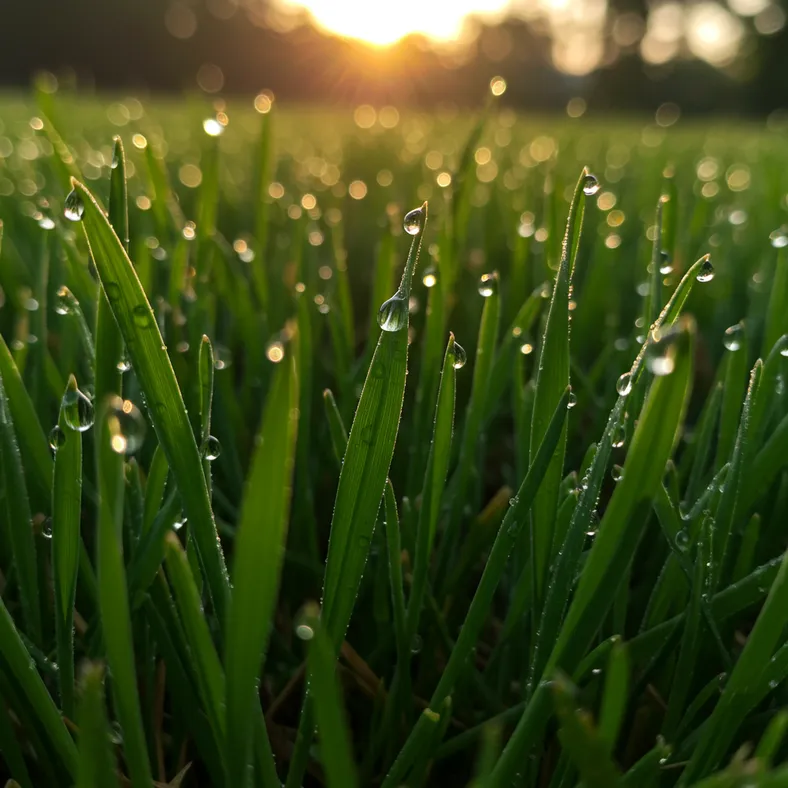
If you've been admiring your neighbours' pristine lawns and wondering whether it's too late to transform your own patchy yard, you're in luck! Many homeowners assume that summer's heat makes grass seeding impossible, but the truth is quite the opposite.
Summer grass seeding can actually be highly successful when approached correctly. The warmer temperatures provide ideal conditions for faster germination and rapid growth - you just need to know the right techniques to keep your seedlings thriving despite the heat.
In this comprehensive guide, we'll show you exactly how to grow grass in summer, from timing and preparation to watering schedules and fertilizer choices that will give your lawn the best possible start.
Benefits of Growing Grass Seed in Summer
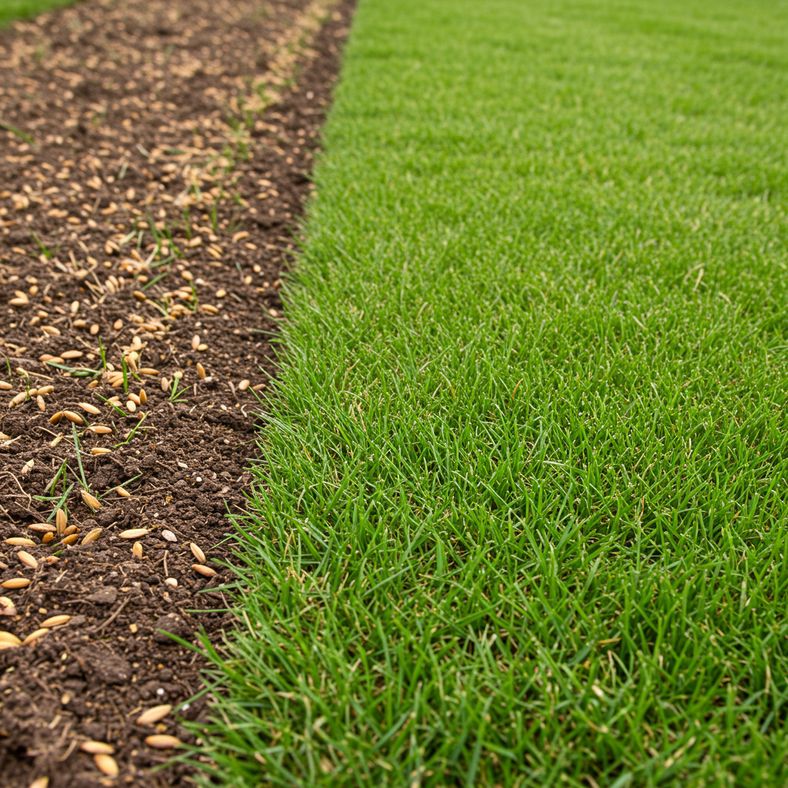
Contrary to popular belief, summer can actually be an excellent time for grass seeding when conditions are managed properly. Here's why:
- Faster germination: Warm soil temperatures accelerate the germination process, often resulting in quicker sprouting than cooler seasons
- Rapid growth: Once established, grass seedlings grow more vigorously in warm conditions
- Extended growing season: Summer seeding gives your grass several months of growing weather before winter dormancy
- Better establishment: With proper care, summer-sown grass can develop stronger root systems before facing winter stress
The key is understanding that while grass seed prefers warmer temperatures, it doesn't thrive in extreme heat. Success comes from timing your seeding carefully and providing consistent moisture throughout the establishment period.
For best results in challenging summer conditions, consider using premium grass seed varieties like Pronto Seed that are specifically designed for rapid germination and superior heat tolerance.
Check the Weather
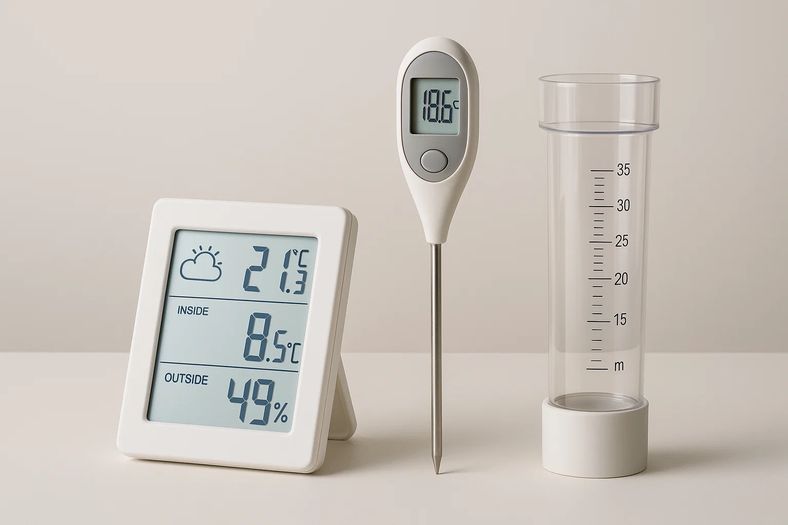
Weather monitoring is absolutely crucial for successful summer grass seeding. Here's what you need to watch for:
Ideal Conditions
- Moderate temperatures between 60-75°F (15-24°C)
- Forecast showing regular rainfall or manageable watering needs
- No extended heat waves predicted for 4-6 weeks post-seeding
- Stable weather patterns without extreme temperature fluctuations
Warning Signs to Delay Seeding
- Heat wave warnings or temperatures consistently above 85°F (29°C)
- Drought conditions with water restrictions
- Erratic weather with potential flooding or severe storms
- Late summer timing that doesn't allow 6-8 weeks before first frost
Remember, timing is everything. It's better to wait for favorable conditions than to rush and risk seedling failure.
Water Generously
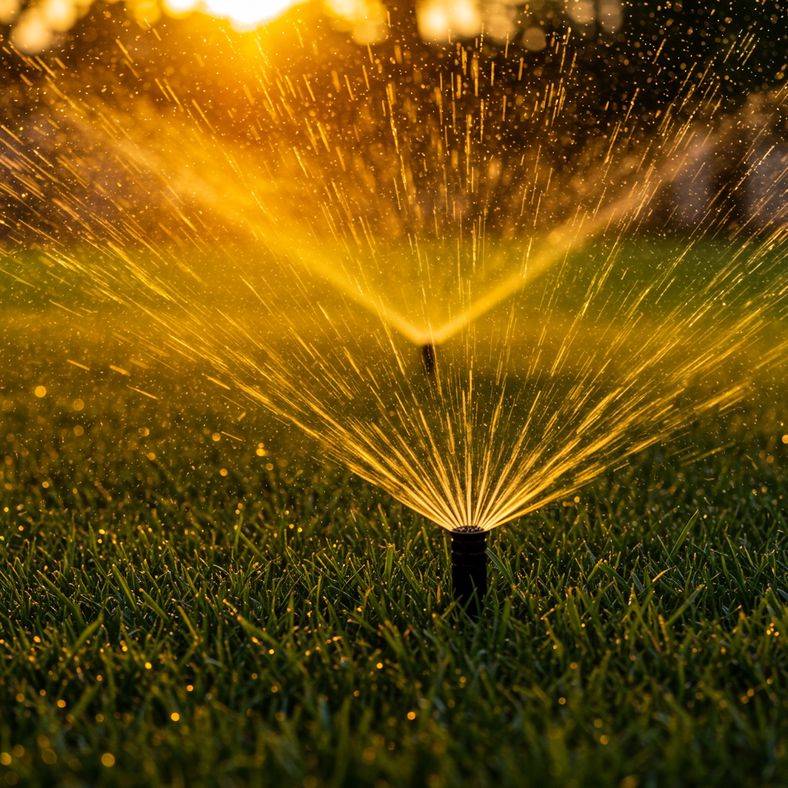
Proper watering is the most critical factor in summer grass seeding success. Here's your complete watering strategy:
Daily Watering Schedule
- Frequency: Water deeply once daily for the first 6 weeks
- Best timing: Early morning (6-8 AM) to minimize evaporation
- Evening supplement: Additional watering in evening if soil dries out during hot afternoons
- Rain days: Skip watering when natural rainfall provides adequate moisture
Water Requirements by Soil Type
- Clay soils: Approximately 12mm of water per session
- Sandy soils: Up to 25mm of water per session
- Loam/normal soils: 15-20mm of water per session
The goal is to keep the soil consistently moist but not waterlogged. Check soil moisture by gently probing with your finger - it should feel like a wrung-out sponge.
Choose the Right Grass Seed for Summer Success
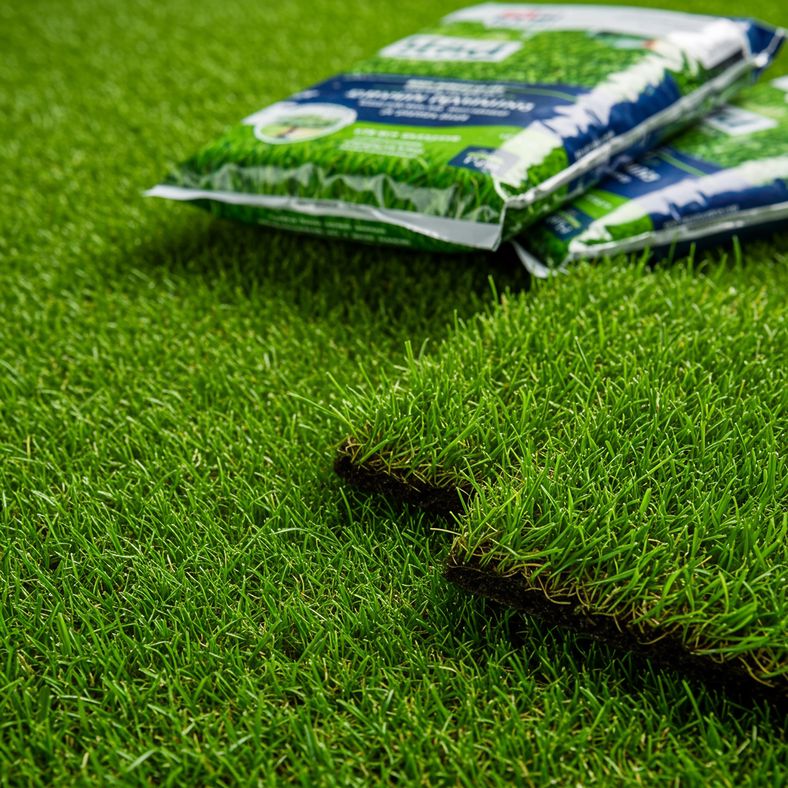
Selecting quality grass seed is crucial for summer seeding success. Not all seeds are created equal, especially when dealing with challenging summer conditions:
Key Features to Look For
- Heat tolerance: Varieties bred to withstand high temperatures
- Drought resistance: Seeds that establish deep root systems quickly
- Rapid germination: Fast-sprouting varieties that minimize exposure to stress
- Disease resistance: Seeds less susceptible to summer fungal issues
Recommended Premium Option
For guaranteed summer success, we highly recommend Pronto Seed Premium Grass Seed, which offers:
- Ultra-fast germination in just 7-14 days
- Superior heat and drought tolerance
- Professional-grade seed coating for enhanced establishment
- Proven performance in challenging summer conditions
- Excellent coverage and density for a professional finish
This premium seed blend is specifically formulated to handle the stresses of summer seeding while delivering rapid, reliable results that transform your lawn quickly.
Can I Use Fertiliser When Growing Grass Seed in Summer?
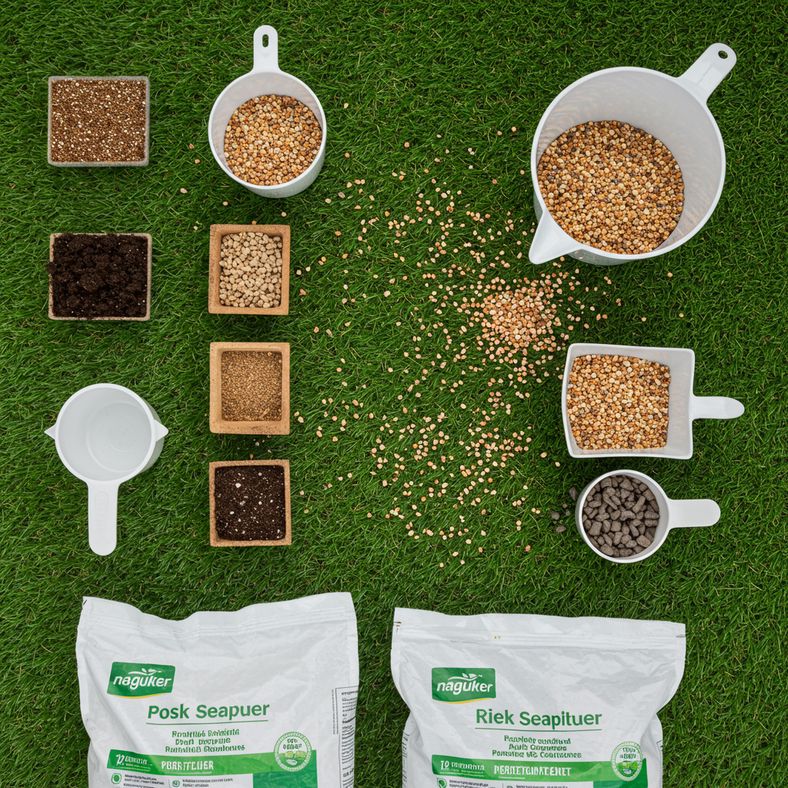
Absolutely! Fertilizing is essential for summer grass seeding success, but timing and product selection are crucial:
Pre-Seeding Fertilization
- Timing: Apply fertilizer 2 weeks before sowing seed
- Purpose: Allows granules to dissolve and nutrients to integrate into soil
- Avoid during heat waves: Wait for cooler weather to prevent fertilizer burn
Recommended Fertilizer Types
QUICK RELEASE: Pre-Seed Granular Fertiliser
- High in phosphate for strong root development
- Improves seed-to-soil contact
- Water thoroughly until granules dissolve completely
Make It Grow Liquid Fertiliser
- Apply 2-3 days before seeding
- Provides immediate nutrient availability
- Gives seedlings optimal growing conditions from day one
SLOW RELEASE: Spring/Summer Granular Fertiliser
- 4-month nutrient release
- Ideal for established lawn areas
- Provides balanced, sustained feeding
QUICK RELEASE: Spring/Summer Fertiliser
- 6-week intensive nitrogen boost
- Fast-acting for immediate growth promotion
- Mini granules dissolve quickly when watered
Remember: Never fertilize during extreme heat - wait for temperatures to moderate for best results.
Can I Use Weed and Feed in Summer?
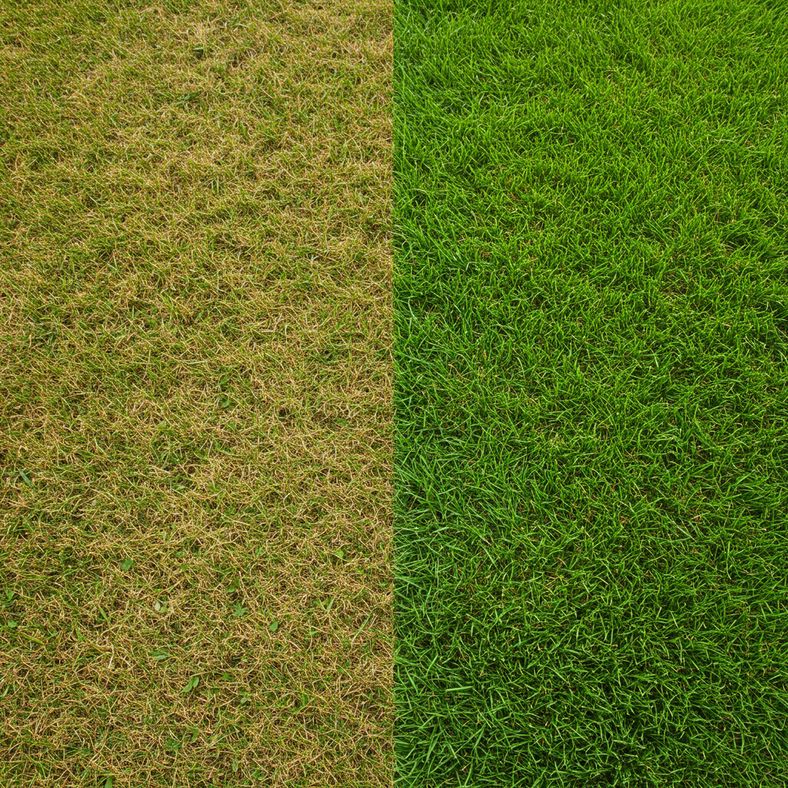
Weed and feed products can be beneficial for summer lawn care, but proper timing is essential when seeding:
For Established Lawns
- Feed, Weed and Mosskiller can be applied throughout summer
- Excellent for maintaining existing lawn health
- Addresses multiple lawn issues simultaneously
When Seeding
- Critical timing: Wait 2 weeks after applying weed and feed before sowing seed
- Reason: Allows product time to eliminate weeds and moss
- Preparation benefit: Creates clean patches perfect for overseeding
Application Process
- Apply Feed, Weed & Mosskiller to target areas
- Wait 2 weeks for full effectiveness
- Remove dead weeds and moss (scarify if necessary)
- Prepare soil in cleared areas
- Proceed with grass seeding in treated zones
This approach ensures your new grass seed won't compete with established weeds and has the best possible growing environment.
Additional Tips for Summer Grass Growing Success
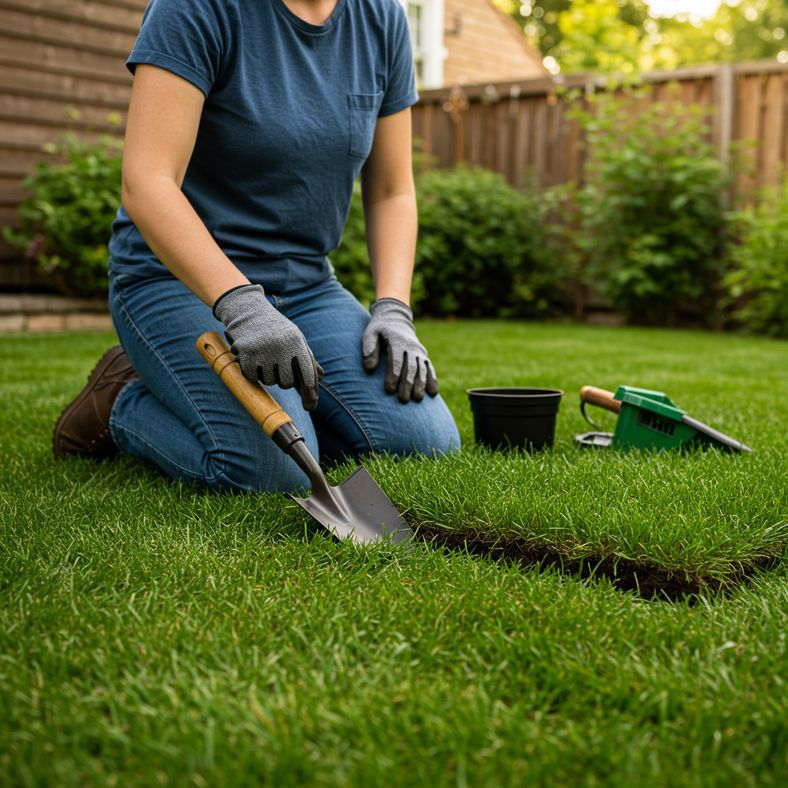
Beyond the basics, these advanced strategies will maximize your summer seeding success:
Soil Preparation
- Test soil pH: Ensure levels between 6.0-7.0 for optimal grass growth
- Improve drainage: Add organic matter to heavy clay soils
- Level surface: Remove rocks, debris, and smooth out major irregularities
- Rake lightly: Create good seed-to-soil contact without burying seeds too deep
Seed Selection
- Choose heat-tolerant varieties appropriate for your climate zone
- Consider drought-resistant cultivars for challenging areas
- Select high-quality seed with good germination rates
- Match grass type to your lawn's sun/shade conditions
Post-Seeding Care
- Avoid foot traffic: Keep people and pets off newly seeded areas
- Monitor growth: Expect germination within 7-21 days depending on variety
- Gradual mowing: Wait until grass reaches 3-4 inches before first cut
- Reduce watering frequency: Gradually decrease as grass establishes
Troubleshooting Common Issues
- Patchy germination: Usually indicates inconsistent watering or poor seed-to-soil contact
- Slow growth: May need additional fertilization or better drainage
- Seedling dieback: Often caused by allowing soil to dry out or over-fertilization
Remember, patience is key. Summer-seeded lawns may take slightly longer to fully establish, but with consistent care, you'll have a beautiful, thick lawn by fall.